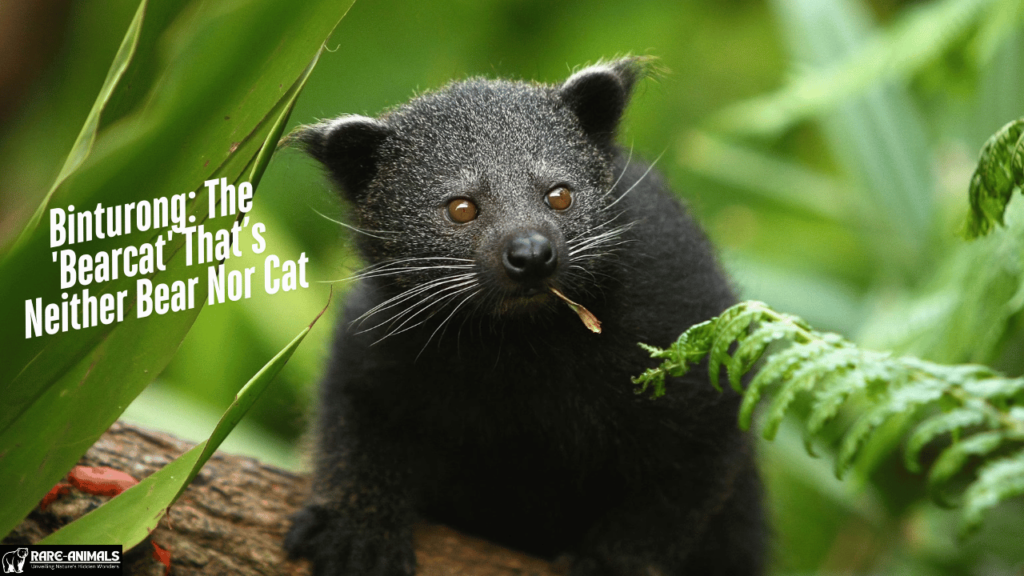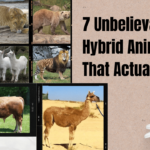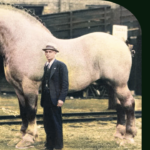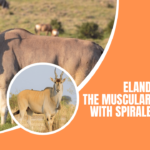The binturong, often referred to as the “bearcat,” is a fascinating creature that defies conventional classifications. Despite its nickname, the binturong is neither a bear nor a cat but a member of the viverrid family, which also includes civets and genets. This elusive and enigmatic animal is native to the dense tropical forests of Southeast Asia, where it plays a vital role in the ecosystem.
In this article, we delve into the unique characteristics, habitat, diet, and conservation status of the binturong.
What Is a Binturong?
Physical Characteristics
The binturong is a medium-sized mammal with a distinctive appearance:
- Size and Weight: Adults can weigh between 20 to 50 pounds and measure up to 38 inches in body length, with an additional 35 inches for their prehensile tail.
- Fur and Coloration: They have coarse, shaggy black fur with hints of silver, giving them a grizzled look.
- Prehensile Tail: Their tail acts as a fifth limb, aiding in climbing and balancing in the treetops.
- Whiskers and Face: The binturong has long, sensitive whiskers and a face that resembles a blend of a bear and a cat, contributing to its nickname.
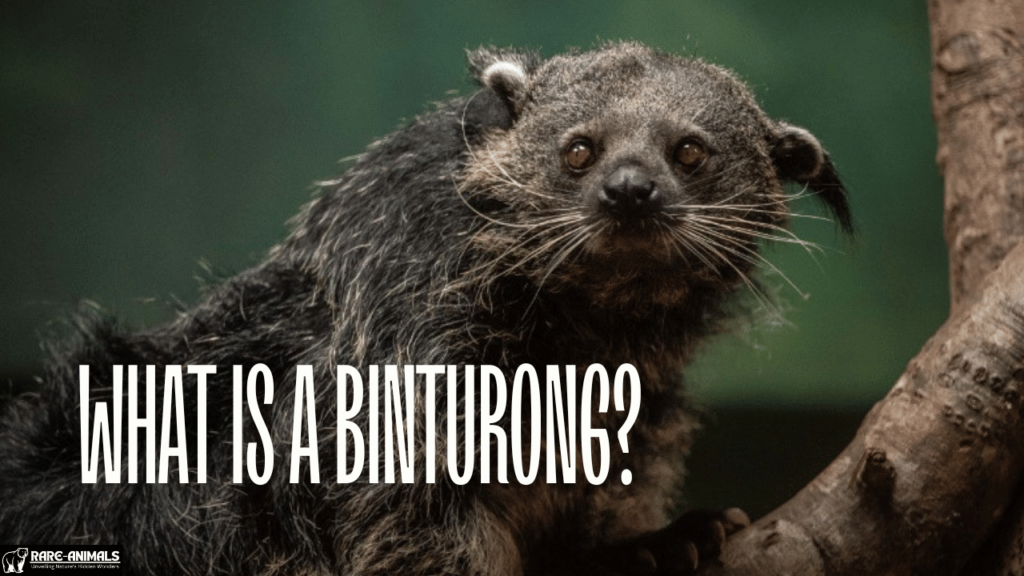
Unique Scent
One of the most intriguing traits of the binturong is its scent, which is often compared to buttered popcorn. This smell comes from a compound in their urine and is used to mark their territory.
Habitat and Distribution
Native Range
Binturongs are found in the dense tropical rainforests of Southeast Asia, including countries such as:
- India
- Bangladesh
- Malaysia
- Indonesia
- The Philippines
Preferred Environment
Binturongs are arboreal, spending most of their time in the forest canopy. They prefer environments with:
- High tree density for climbing and resting.
- Abundant food sources such as fruits and small animals.
- Limited human disturbance.
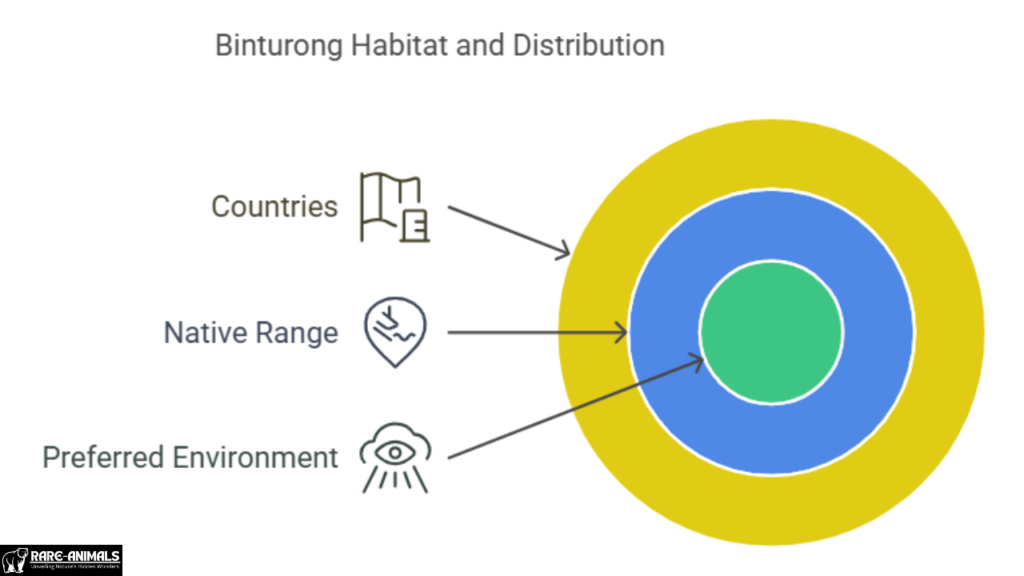
Diet and Role in the Ecosystem
Omnivorous Diet
Binturongs are omnivores, and their diet includes:
- Fruits: Particularly figs, which are a staple.
- Small Animals: Such as birds, rodents, and insects.
- Plant Material: Including leaves and shoots.
Seed Dispersal
Binturongs play a crucial role in their ecosystems as seed dispersers. By consuming fruits and excreting the seeds in different locations, they contribute to forest regeneration.
Behavioral Traits
Nocturnal and Solitary
Binturongs are primarily nocturnal and solitary, though they may occasionally be seen in pairs or small family groups.
Vocalizations
These animals communicate through a range of sounds, including:
- Growls and Hisses: When threatened.
- Chirps and Purrs: During social interactions or mating.
Conservation Status
Threats
The binturong faces several threats in the wild, including:
- Habitat Loss: Due to deforestation for agriculture and urban development.
- Hunting and Poaching: For their fur, meat, and use in traditional medicine.
- Pet Trade: Illegal capture for exotic pet markets.
Conservation Efforts
Several initiatives aim to protect the binturong, such as:
- Protected Areas: Establishing wildlife reserves and national parks.
- Breeding Programs: Captive breeding to maintain population numbers.
- Awareness Campaigns: Educating local communities about the importance of conservation.
Fascinating Facts About Binturongs
- Lifespan: Binturongs can live up to 25 years in captivity.
- Swimming Ability: Despite being arboreal, they are excellent swimmers.
- Rare Sightings: Their elusive nature makes them a rare sight, even in their native habitats.
- Cultural Significance: In some cultures, they are considered symbols of good luck.
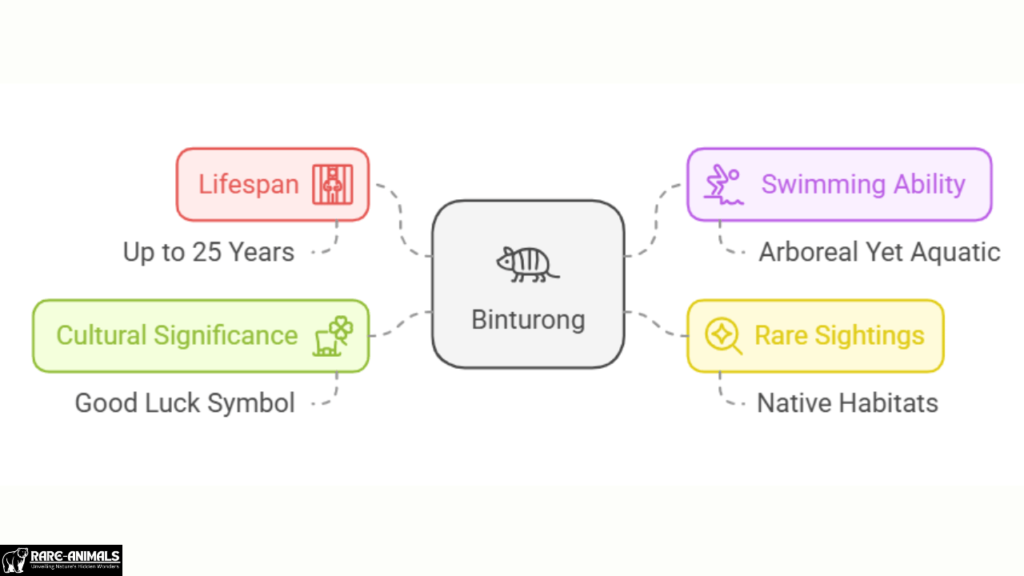
FAQs
What is the scientific name of the binturong?
The scientific name of the binturong is Arctictis binturong.
Are binturongs endangered?
Binturongs are listed as Vulnerable on the IUCN Red List due to declining populations.
Can binturongs be kept as pets?
While some people keep them as exotic pets, it is not advisable due to their specific habitat needs and the ethical implications of removing them from the wild.
Conclusion
The binturong is a remarkable creature that captures the imagination with its unique appearance, behaviors, and ecological importance. However, like many other species, it faces significant challenges in the wild.
By supporting conservation efforts and spreading awareness, we can help ensure that this “bearcat” continues to thrive in its natural habitat.
Explore ways to support binturong conservation by donating to wildlife organizations or visiting eco-tourism destinations that promote sustainable practices. Share this article to inspire others to learn about and protect this incredible species.

Alveena is an experienced content writer with a knack for crafting engaging and insightful pieces. She thrives on breaking down complex ideas and presenting them as clear, captivating content that resonates with readers.

